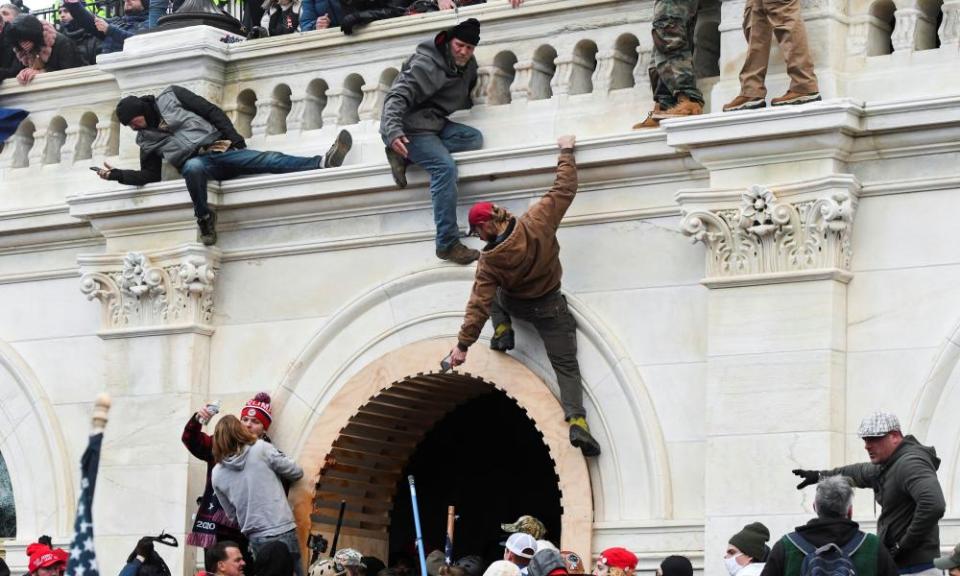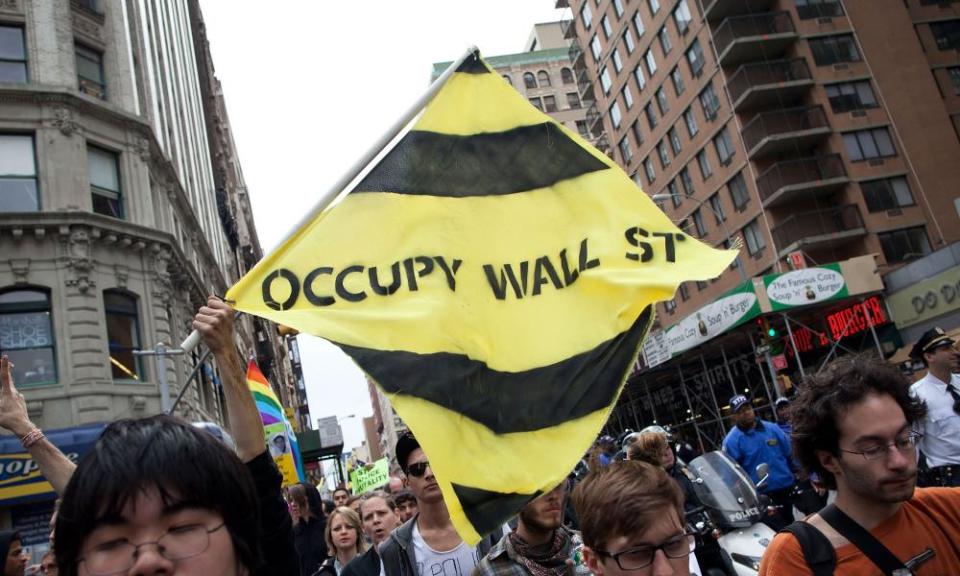We're on the verge of breakdown: a data scientist's take on Trump and Biden
Peter Turchin is not the first entomologist to cross over to human behaviour: during a lecture in 1975, famed biologist E O Wilson had a pitcher of water tipped on him for extrapolating the study of ant social structures to our own.
It’s a reaction that Turchin, an expert-on-pine-beetles-turned-data-scientist and modeller, has yet to experience. But his studies at the University of Connecticut into how human societies evolve have lately gained wider currency; in particular, an analysis that interprets worsening social unrest in the 2020s as an intra-elite battle for wealth and status.
The politically motivated rampage at the US Capitol fits squarely into Turchin’s theory. In a 2010 paper, Dynamics of political instability in the United States, 1780-2010, Turchin wrote that “labour oversupply leads to falling living standards and elite overproduction, and those, in turn, cause a wave of prolonged and intense sociopolitical instability.”
Turchin’s Cliodynamics, which he describes as “a more mature version of social science”, rests upon 10,000 years of historical data, as such there is, to establish general explanations for social patterns. He predicts that unrest is likely to get worse through this decade, just as it has in roughly 50-year cycles since 1780.
Historians don’t necessarily like the proposal, he acknowledges. “They bring general theories through the back door. Our job is to be explicit.”
Explicitly, then, Turchin explains current political warfare as a battle between an overpopulation of elites to some degree exacerbated by a decline in general living standards or immiseration, and financially overextended governments. Initially, Turchin applied the theory to pre-industrial societies, but a decade ago he travelled forward in time, predicting unrest – Ages of Discord – that would intensify in 2020 and endure until reversed.

“Societies are systems and they tend to change in a somewhat predictable way,” Turchin told the Observer. “We are on the verge of state breakdown where the centre loses hold of society.”
In the US, he points out, there are two political chief executives, each commanding his own elite cadre, with nothing yet being done at a deep structural level to improve circumstances. “We’ve seen growing immiseration for 30 to 40 years: rising levels of state debt, declining median wages and declining life expectancies. But the most important aspect is elite overproduction” – by which he means that not just capital owners but high professionals – lawyers, media professionals and entertainment figures – have become insulated from wider society. It is not just the 1% who are in this privileged sector, but the 5% or 10% or even 20% – the so-called “dream hoarders” – they vie for a fixed number of positions and to translate wealth into political position.
“The elites had a great run for a while but their numbers become too great. The situation becomes so extreme they start undermining social norms and [there is] a breakdown of institutions. Who gets ahead is no longer the most capable, but [the one] who is willing to play dirtier.”
Turchin’s analysis, of course, is readily applied to Donald Trump who, spurned by mainstream elites, appealed to a radical faction of the elite and to the disaffected masses to forward his political ambition. A similar case could be made for leading Brexiteers.
Related: 'Incited by the president': politicians blame Trump for insurrection on Capitol Hill
Similar circumstances, says Turchin, can be found with the Populares of first century Rome who played to the masses and used their energy to attain office – “Very similar to Trump, who created a radical elite faction to get ahead.”
In the professor’s reading, the incoming administration, notwithstanding the diversity of its appointments, is representative of mainstream elite power. “Think of 2020 as the return of the established elite and separation of dissidents. What’s important is that the incoming administration recognises the root problem.”
In recent weeks, Turchin has found himself profiled in the Atlantic (The Historian Who Sees the Future), portrayed as a mad prophet, and name-checked by the Financial Times (The Real Class War is Within the Rich).
He has been uplifted by some, but pushed back against by others. “You have this veneer of complicated impressive science. But any analysis like this is only as good as the data upon which it rests,” says Shamus Khan, chair of Columbia University’s sociology department. “It’s easy to imagine that you’re a Cassandra, and forget about the million others who similarly claim that they are.”
“I think he’s got a point, because a significant component of the reasonably far left are highly educated but with blocked opportunities,” says Mark Mizruchi, author of The Fracturing of the American Corporate Elite. “Where you have disjunctures is where you get political extremism. If Turchin is right, you’re going to get a lot more highly educated people facing limited career prospects. Most of those will turn left rather than right.”
Dorian Warren, one of the authors of The Hidden Rules of Race: Barriers to an Inclusive Economy, says elite warfare is only one way to describe the circumstances. “Frustrated elite aspirants gets radicalised when their expectations meet the reality of a rigid hierarchy. They perceive the system as unjust, but the source of injustice is elite overproduction and too much competition.

Warren points to Occupy Wall Street, which was not a working-class movement. “It was mostly disaffected, white college graduates. That was a preview of what we’re seeing now.”
In the American context, Warren says, “it’s mostly white elite fighting among each other, while the elites of colour are trying to break into the hierarchy.” For the most part, Warren points out, black elites in the US refuse to participate in white elite warfare.”
But the hard science of Turchin’s approach cannot explain all things. After the Great Depression in what some might call a negotiated settlement, elites negotiated a unionised settlement with the masses in a moment of enlightened self-interest.
“There was an elite consensus to accept the legitimacy of unions. In the last 40 years, we’ve seen a re-fracturing of that consensus with no worry for peasants with pitchforks who might come.”
Without Trump as a unifying villain, elite fracturing is likely to enter a period of multi-dimensional refracture. “The left was always fighting among itself, so in some ways, it’s reversion to normal. There’s a reckoning coming in the Republican party, too, as it turns in on itself again over how it lost power. I think we’ll see intra-elite warfare on both sides.”
Warren believes we’re at a critical juncture over a new elite settlement. One reason for optimism can be found in the battle for a minimum wage or corporate support for the social justice movement – “seeds of a new settlement”.
Turchin says he feels “vindicated as a scientist who proposed a theory, but I have some consternation that we have to live through this. It may not be very pretty. I’m worried about a state breakdown. Mass shootings and urban protests are the warning tremors of an earthquake. Society can survive, but problems are likely to escalate.”

 Yahoo Finance
Yahoo Finance 